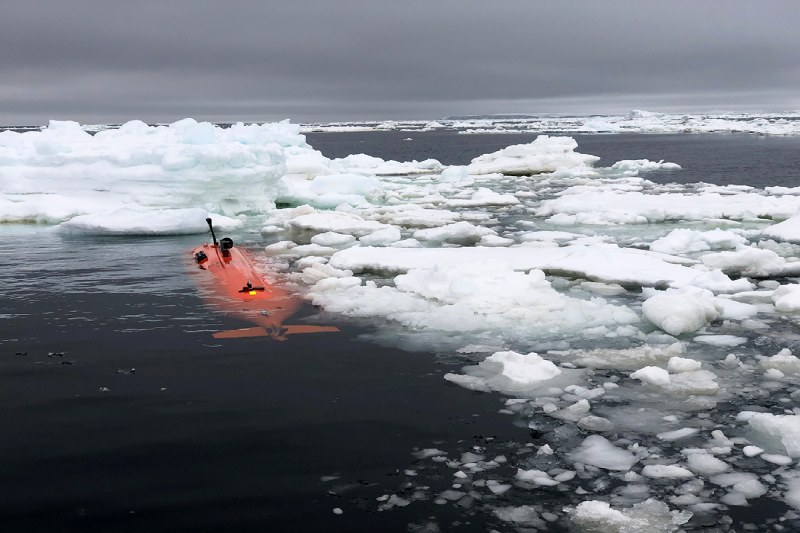An underwater vehicle that was exploring beneath Antarctica’s “Doomsday Glacier” vanished without a trace.
This past weekend, the 23-foot unmanned underwater vehicle (AUV), known as Ran, vanished while on a trip to examine the Thwaites Glacier.
With its technology and sensors that enable it to measure and record the water conditions beneath glacial ice for extended periods of time, Ran is one of only three vehicles of its kind in the world. It is projected to cost roughly $3.6 million.
“This was the second time we took Ran to Thwaites Glacier to document the area under the ice. Thanks to Ran, we became the first researchers in the world to enter Thwaites in 2019, and during the current expedition we have visited the same area again. Even if you see melting and movements in the ice from satellite data, from Ran we get close-ups of the underside of the ice and information about exactly which mechanisms are behind the melting,” Anna Wåhlin, a professor of oceanography at the University of Gothenburg and member of the research team, said in a statement.
The Thwaites Glacier, a component of the West Antarctic Ice Sheet (WAIS), is the largest glacier on Earth, covering an area of over 74,000 square miles on its surface—more than twice the size of Maine and more than the state of Florida. Because of the effect that a complete melting of Thwaites would have on world sea levels, it is also occasionally referred to as the Doomsday Glacier. If the glacier completely collapsed, sea levels are estimated to rise by an average of 25 inches, or more than 2 feet, worldwide.
Additionally, there are worries that the collapse of Thwaites may set off a domino effect among the nearby glaciers, potentially raising world sea levels by several meters.
“A sea level rise of several meters would inundate many of the world’s major cities—including Shanghai, New York, Miami, Tokyo and Mumbai. It would also cover huge swathes of land in coastal regions and largely swallow up low-lying island nations like Kiribati, Tuvalu and the Maldives,” Ella Gilbert, a postdoctoral research associate in climate science at the University of Reading, U.K., wrote in an article for the Conversation in 2021.
Because Thwaites loses a net amount of about 50 billion tons of ice annually and about 1000 billion tons since 2000, it is currently accountable for about 4% of the rise in world sea levels.
From 650 to 1,640 feet below the surface, Ran dives beneath glaciers such as Thwaites to conduct research. Typically, Ran has its route preprogrammed and navigates back to the ocean’s surface without constantly communicating with the research vessel, the South Korean icebreaker RV/IB Araon, on the surface. Ran had dove under Thwaites multiple times before, but this time, an issue occurred and Ran did not surface at the scheduled moment. Drones, acoustic search equipment, and helicopter searches proved fruitless, and Ran is still under the ice.
“It’s a bit like looking for a needle in a haystack, but without even knowing where the haystack is. At this point, Ran’s batteries are dead. All we know is that something unexpected happened under the ice. We suspect it ran into trouble, and then something prevented it from getting out,” Wåhlin said.
Although the team does not have much hope of seeing Ran again, they are appreciative of the information they have already obtained and the ship’s and the expedition management’s assistance.
The position of the Thwaites Glacier in West Antarctica is depicted on a map. This glacier is sometimes referred to as the “Doomsday Glacier” because, should it melt fully, it would raise sea levels by many feet worldwide.
“The information that we obtain from Ran is exceptional for global research and unparalleled in the globe. The stakes are great, and we recognized that something similar would occur—even that Ran’s demise is likely,” Wåhlin remarked.
“Personally, I’m of the opinion that this is a better end than having the AUV aging gathering dust in a garage. At the same time, it is of course a very big loss. We have had Ran for five years now, and during those five years we have carried out about ten expeditions, training, development work and tests,” she said. “Our aim is to replace Ran.”
Topics #Antarctica #Doomsday Glacier










